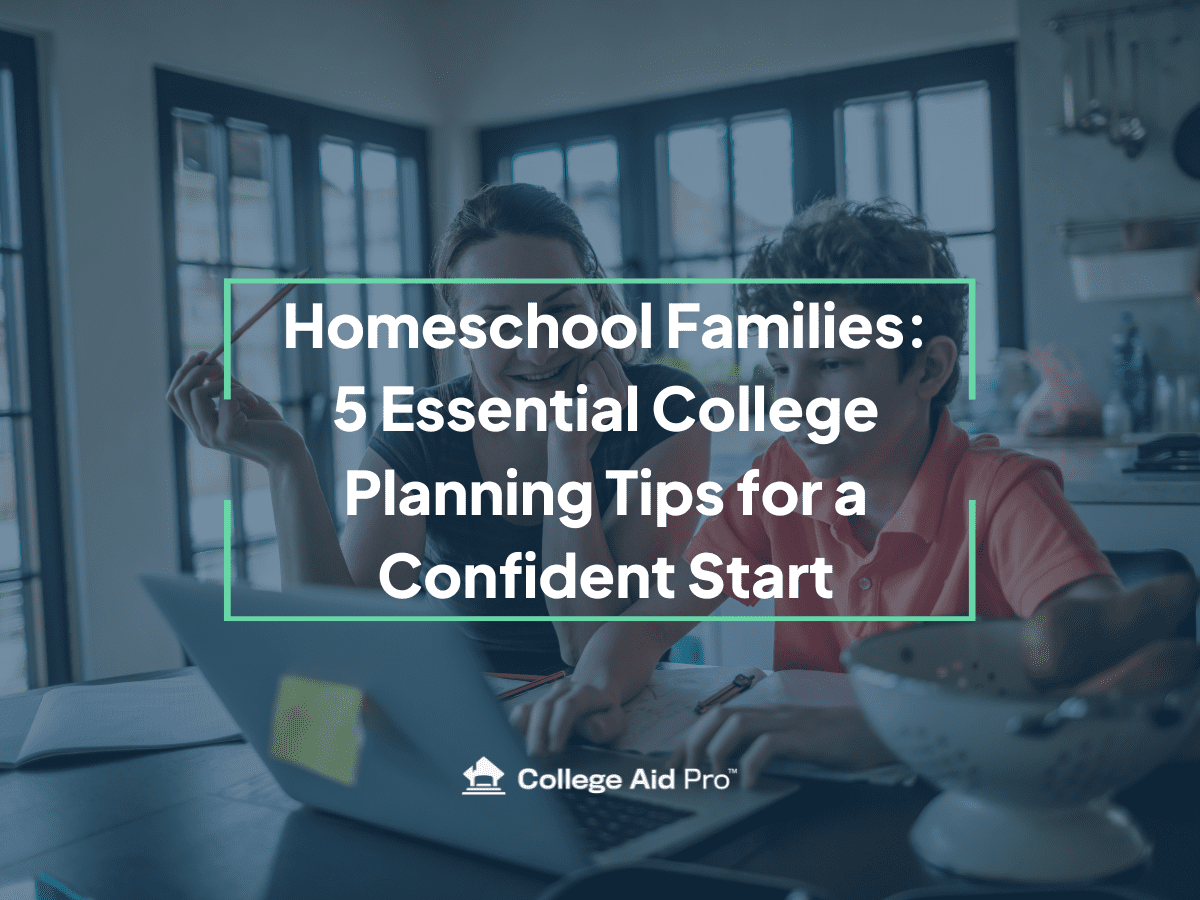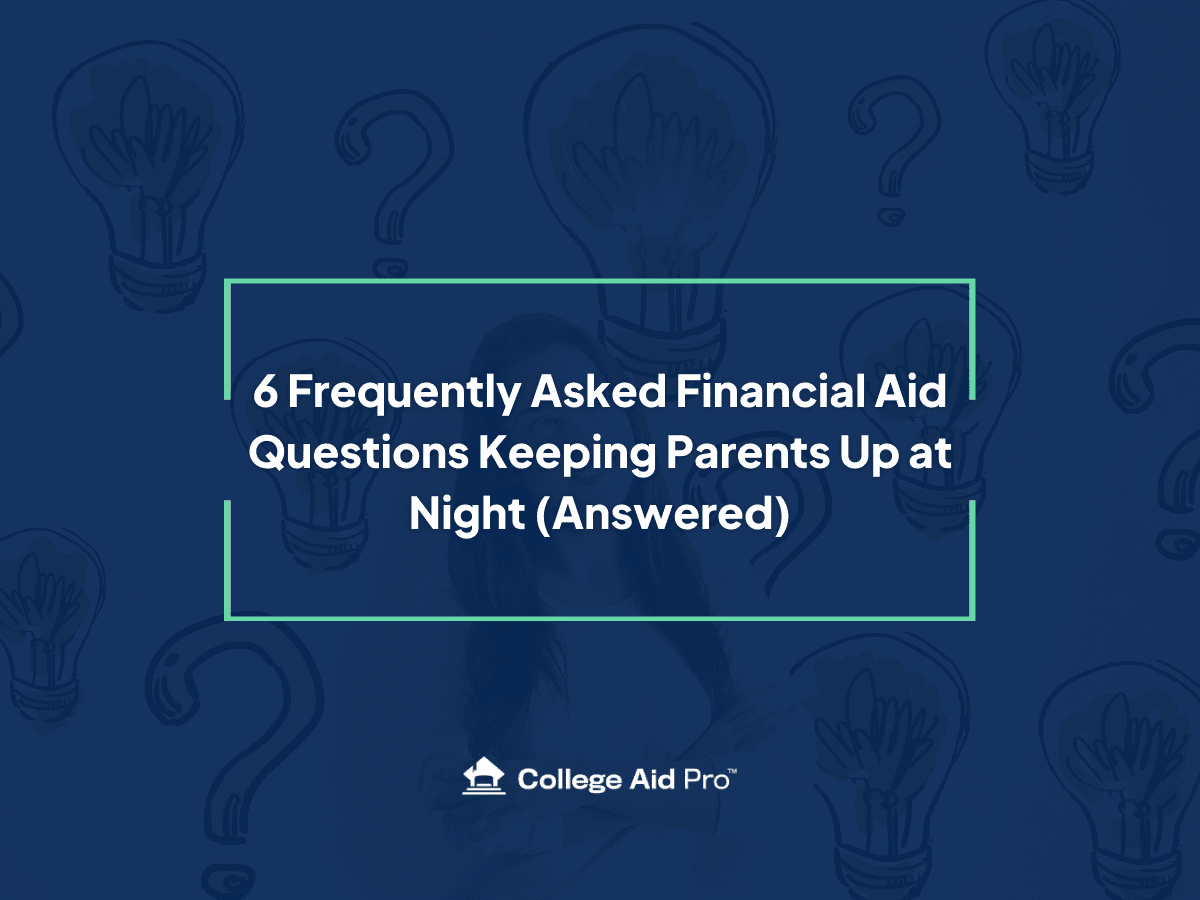Top 5 College Planning Tips for Homeschool Families
Because you already do the hard stuff—this part shouldn’t be harder than it has to be.
If you’re a homeschool family, you’ve already taken the road less traveled—and let’s be honest, you’ve probably had to figure out most of it yourself.
From choosing curriculum to finding co-ops, from building transcripts to keeping up with state requirements, you’ve done what works best for your child. But when it comes to college planning, even the most seasoned homeschool families pause and wonder:
Are we on the right track? Are we missing something?
You’re not alone. College planning is hard for all families—but it can feel even more overwhelming for homeschoolers who don’t have a built-in school counselor or easy access to the same resources as public or private school students.
That’s why we created this list—to give you a starting place. Five tips that every homeschool family with a college-bound student needs to know.
We’ll keep it simple, promise.
1. Figure out what college will really cost your family.

Not just the sticker price. Not what your neighbor paid. Not the average cost from a search engine.
The real cost of college is different for every family. It depends on your income, assets, your student’s academic and extracurricular profile, how many kids you have in college at once—and how generous each college is with financial aid.
There are two main types of aid to understand:
- Need-based aid is based on your financial situation and is calculated using your FAFSA (and sometimes the CSS Profile). This amount can change each year depending on your income, assets, or number of kids in college.
- Merit-based aid is awarded for things like grades, test scores, leadership, or talents. Most colleges will guarantee this aid for four years, as long as your student keeps up their GPA and stays enrolled full time.
You might receive some of both—but unless you understand what’s available, what’s likely, and what each college offers, you’re flying blind.
It’s crucial to know what colleges will expect your family to pay—and whether that amount fits your budget. Guessing can cost you thousands.
👉 Create a free MyCAP account to see what college will really cost your family and build a custom plan that works.
2. Find trusted guidance early—don’t navigate this alone.

One big difference between homeschooling and traditional schooling? No school counselor.
No one automatically handing you timelines, test dates, scholarship deadlines, or application tips.
That means you have to be the counselor—and unless you’ve done this before, it’s a lot to take on.
The earlier you start learning how financial aid works, how to compare colleges, and how to build a strong application timeline, the more confident you’ll feel throughout the process.
And you don’t have to figure it out alone. That’s why we’re here.
👉 Check out our homeschool resource hub for tools, timelines, and guidance built for families like yours.
3. Plan for standardized tests to open scholarship doors.

Some colleges are test-optional—but many still use standardized test scores to award merit-based scholarships, even if they don’t require them for admission.
That’s why tests like the SAT and ACT can still be valuable tools for homeschool families.
Both are college entrance exams accepted by nearly every college in the country. Your student can choose which one to take—colleges don’t prefer one over the other—and they can take either test multiple times to improve their score.
You’ll also want to look at the PSAT. Your student can take it in 10th grade as a practice run, and then again in 11th grade to potentially qualify for National Merit Scholarships, which can lead to thousands of dollars in aid.
As a homeschooler, you’ll need to register for these tests through a local high school or testing center. Planning ahead is key.
📚 Learn more about test dates and how to register via College Board
4. Get connected to scholarships and opportunities.

One of the biggest challenges homeschool families face in the college process is simply knowing what’s out there. In a traditional school, students hear about scholarship opportunities, college fairs, fee waivers, and campus events over the announcements or from their school counselor. As a homeschooler, you have to go looking for those opportunities—but they’re out there.
Start by tapping into local high schools, especially if they allow homeschool students to participate in college fairs or attend financial aid nights. Reach out to school counselors and ask if they can include you on scholarship email lists or let you attend relevant events.
Next, look into community-based organizations, homeschool co-ops, and regional college access groups. These groups often post about local scholarships, essay contests, and summer programs that are open to all students, not just those enrolled in public or private schools.
Don’t forget: many colleges also host their own events—admissions presentations, preview days, or virtual Q&As—specifically designed to help students learn more about campus life and affordability. These are great ways for homeschoolers to connect directly with admissions reps and learn about aid options.
It takes more intention, but building your own information network pays off.
👉 Visit our homeschool landing page for tools and opportunities designed just for families like yours.
5. Build a strong student resume—beyond academics.

Homeschoolers often do an amazing job when it comes to academics. But when it’s time to apply to college, it’s important to show more than just strong grades or test scores.
Colleges want to see a well-rounded student—someone who’s curious, motivated, and engaged with the world around them. That’s where a strong student resume comes in.
Think about what your teen does outside of core coursework:
- Volunteering
- Working part-time
- Leading a class or club in your co-op
- Pursuing creative passions like music, art, or writing
- Participating in community theater, athletics, or church youth groups
- Starting a small business or launching a project
All of these things matter—and they tell a story about your student. They show initiative, responsibility, and a sense of purpose. They also help homeschoolers stand out in a college applicant pool where schools may be less familiar with your homeschool transcript or grading.
Encourage your student to try new things, take on leadership roles, and document what they’re doing. The goal isn’t to check boxes—it’s to reflect who they really are and what they care about.
Final Thoughts
There’s no one “right way” to homeschool—and the same is true for college planning. But there is a smarter, more informed way to do it, and it starts with understanding the steps ahead.
The tips we’ve shared here aren’t about doing more—they’re about doing the right things at the right time, with the right information.
You don’t need to have all the answers today. But by taking small, intentional steps now, you’ll set your student up for success—and save yourself a lot of stress down the road.
We’re here to help you do just that.
✅ Create your free MyCAP account to estimate real college costs and find the best-fit schools
✅ Explore our homeschool resource hub for timelines, tools, and planning guides
✅ Download our free College Prep Checklist to stay organized and on track
You’ve got this—and we’ve got your back.



